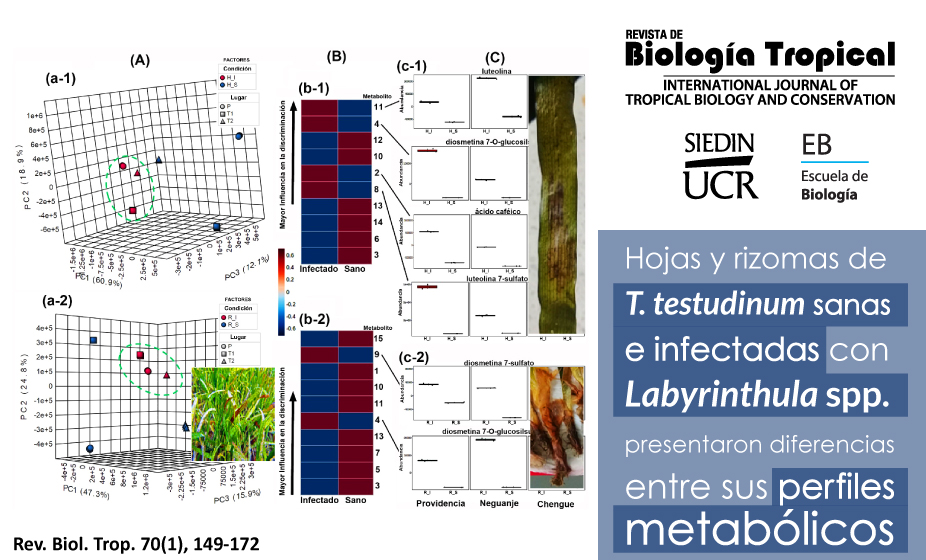Abstract
Introduction: Protists of the genus Labyrinthula cause the so-called “Wasting Disease” in seagrass, Thalassia testudinum. Monitoring in the Colombian Caribbean since 2008 has shown spatial and temporal variation in the disease’s incidence, but without the high mortality observed in other regions of the world. Objective: To analyze some epidemiological parameters in T. testudinum and to compare metabolites between healthy and infected plants. Methods: We recorded severity, incidence and prevalence of this disease in Tayrona National Natural Park and Providencia Island, and we analyze water and sediment samples. Additionally, we applied gas and liquid chromatography, coupled with mass spectrometry, to methanolic extracts from leaf and rhizome samples of healthy and infected shoots. Results: The meadows were in good condition, despite the scarce seagrass shoots in Tayrona and a high incidence (15 %) and severity (35.5 %) of the disease in Providencia. Infected plants had lower levels of phenols, flavonoids and sugars. Sulphated flavones with aglycone luteolin and diosmetin, sterols (sitosterol and stigmasterol) and volatile oxylipins are accumulated in leaves (3-hydroxy-2-isopentanone) and isopentaenoic and octadecatrienoic acids in rhizomes. Conclusions: These Colombian seagrasses have differential production of metabolites. Probably as a successful defense, even at low levels of severity (0.1 %) and incidence (1 %) of the disease.
##plugins.facebook.comentarios##

This work is licensed under a Creative Commons Attribution 4.0 International License.
Copyright (c) 2022 Revista de Biología Tropical







